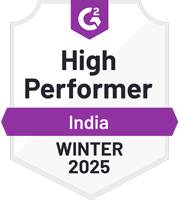Tired of writing solid content that still gets buried on page three? You’re not alone. Plenty of good articles never see the light of Google’s first page—not because they suck, but because they weren’t built to rank. If you want your posts to actually show up where people can find them, you need to write SEO-friendly articles that do more than just sound smart. This isn’t about gaming the system or stuffing keywords—it’s about writing with purpose and using tools that tell you what’s working and where.
Understand Your Audience and Their Search Intent
Start by figuring out who you’re writing for. Not some vague group. Real people with real questions. If you’re throwing words into the void, don’t expect Google to care. People search because they want answers, not fluff.
Look at what your readers type into that search bar. Are they asking how to do something? Looking for a list? Comparing options? That’s their intent — and if you miss it, your content gets ignored. You can write 2,000 words of perfect grammar and still get buried on page five.
Focus on what problems they’re trying to solve or what decisions they’re trying to make. Use tools like Google Search Console or even observe auto-suggestions in the search bar. These little hints show exactly what people want from your article.
When you align your message with their goal, Google notices. It sees that users stick around longer, click through more pages, and actually engage with your content instead of bouncing off after three seconds.
To write SEO-friendly articles, stop guessing and start listening. Track which topics bring traffic to your site already — then dig deeper into those themes with smarter targeting.
Need help getting sharper at this? There’s a practical way forward: join the 14-Day Keyword Challenge. It gives you daily steps so you can build skills fast and learn how pros think about intent-driven content.
The challenge walks you through matching keywords with purpose — not just stuffing them in randomly but placing them where they actually matter for rankings.
If you’ve been publishing without seeing results, it’s time to stop winging it and start tracking impact properly across both Google and social platforms. Matching intent is one of the fastest ways to turn flat traffic into rising numbers without rewriting everything from scratch.
Getting this part right sets up every other move in SEO — research, structure, optimization — all built on knowing why someone landed on your post in the first place.
Write SEO-Friendly Articles That Deliver Value
People don’t search for fluff. They want answers, fast. If your content wastes their time, they bounce. When you write articles, the goal isn’t just rankings — it’s making sure someone lands on your page and actually sticks around.
Start by thinking about what real users type into search bars. Those words matter more than clever headlines or vague ideas. Use those terms in your copy where they make sense — not stuffed into every sentence, but placed naturally so the flow stays human.
Headings shouldn’t be afterthoughts either. Break down long blocks of text with clear section titles that match what people look for online. Each paragraph should solve part of a problem or explain something helpful. Readers came for a reason; give them what they need without dragging things out.
Don’t hoard information behind ten paragraphs of filler before getting to the point. Put useful stuff up top and use links to expand when needed. Whether it’s a how-to guide or product comparison, lead with clarity and back it up with solid steps.
Use examples that readers can apply right away. Show them how to implement tips instead of just listing them off like a checklist from 2012 blog posts no one reads anymore.
If you’re unsure whether your content hits the mark, test it in real time using tools that track both Google rankings and social media impact side-by-side — because knowing where your content performs best saves effort later.
Want help building these habits? The 14-Day Keyword Challenge gives you daily direction while showing how each piece fits into long-term gains. You’ll build useful skills fast and learn how to approach writing like an actual strategist instead of guessing what might rank next week.
Build value first — rankings follow people who stay on pages, not those who click away after five seconds because nothing makes sense or helps them move forward.
Optimize On-Page Elements for Maximum Impact
Google doesn’t guess what your page is about — it reads the clues you leave behind. Your title tag is one of those clues. Use it to tell Google and people exactly what your article covers. Keep it short, clear, and focused on the main point. Don’t cram in keywords like a checklist. One strong key phrase that matches your topic works better.
Meta descriptions don’t directly change rankings, but they influence clicks. A good one gives a reason to visit your page instead of someone else’s. Make sure it reflects what readers will find inside the article — no clickbait or filler.
Images matter too, but not just for looks. Add alt text that describes each image accurately and ties back to the subject of your post. This helps search engines understand visual content and improves accessibility at the same time.
Internal links do more than guide readers around your site — they show search engines how pages connect. Link related posts together so Google sees a network of useful information around one theme. This also keeps visitors on your site longer, which sends positive signals back to search engines.
If you need help tightening up these parts without wasting hours testing random ideas, try building habits through real practice. The 14-Day Keyword Challenge walks you through steps like optimizing tags and structuring internal links with tools that track both rankings and social reach.
To write SEO-friendly articles that actually gain traction, every piece needs a job — from headers to images to links — all working toward one goal: getting seen by people who care about what you’re saying.
Start shaping these elements with purpose instead of guessing what might stick next time you publish something new online.
Keep Content Fresh and Regularly Updated
Search engines don’t care when you wrote something. They care if it’s still useful. That means your job doesn’t end once an article goes live. Old posts lose value fast if they sit untouched for months or years. If the info is outdated, people bounce. If links break or stats change, your rankings drop.
Updating doesn’t always mean rewriting everything. Sometimes you just need to swap in new data, fix broken links, or clean up clunky wording. Other times, adding a recent case study or removing dead trends can make a big difference.
If you’re serious about trying to write SEO-friendly articles, this matters more than ever. Google tracks how often content changes—and rewards those who keep things current with better visibility.
It’s not just about making updates either—it’s about doing it regularly. Set time aside every month to review older pieces that still bring in traffic or used to perform well but have slipped down the rankings. Prioritize pages that talk about tools, methods, or stats that change quickly.
This is where building habits helps more than hacks do. A system beats random effort every time.
One way to build those habits? Join something like the 14-Day Keyword Challenge. It walks you through refining one of your top pages using real steps—not fluff—with solid tools and expert input along the way. You’ll learn how small updates add up over time and what signals matter most for staying visible.
Smart marketers know ranking high isn’t a one-time win—it’s a process that never stops moving forward.
Don’t let good content die slow just because it’s old news now—give it another shot at climbing back up where it belongs.
Mastering the Climb: From Keywords to Consistent Wins
If you want your content to rise above the noise, it’s not enough to just write — you need to write SEO-friendly articles with purpose and precision. That means understanding your audience’s intent, delivering real value, optimizing every on-page element like a pro, and keeping your content fresh enough to slap Google’s algorithm awake. But if you’re serious about turning theory into traction, it’s time to get your hands dirty. Join the 14-Day Keyword Challenge and start building skills that actually move rankings — not just dreams. Your climb starts now.










